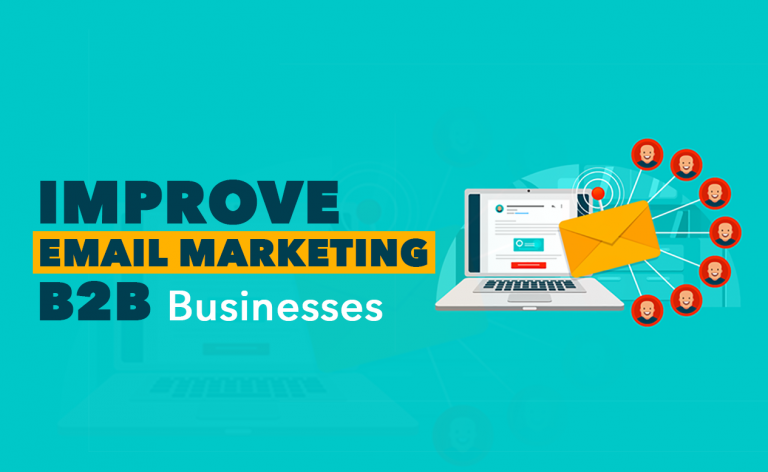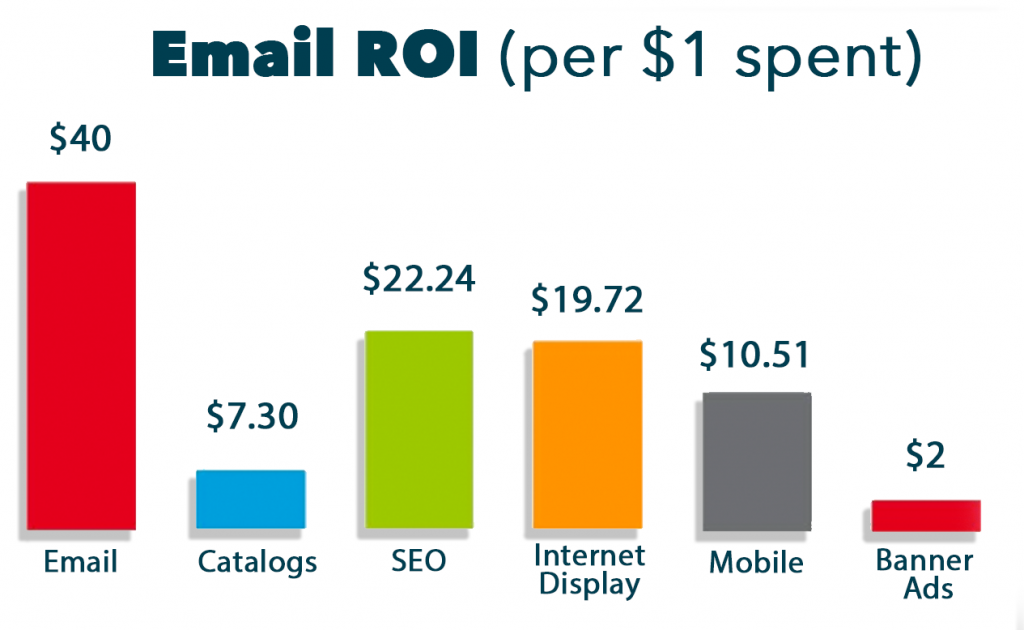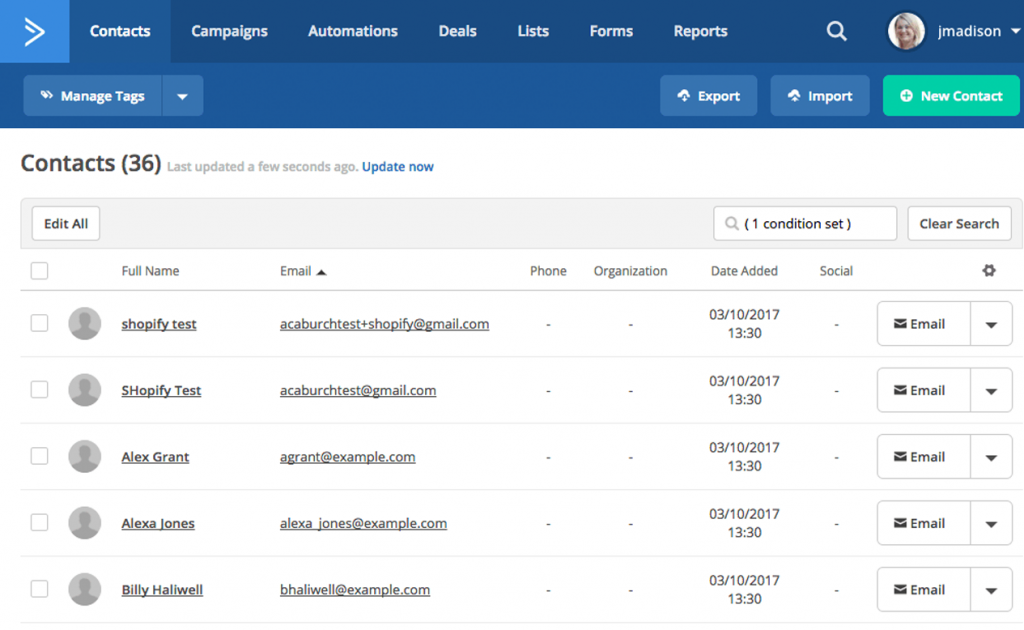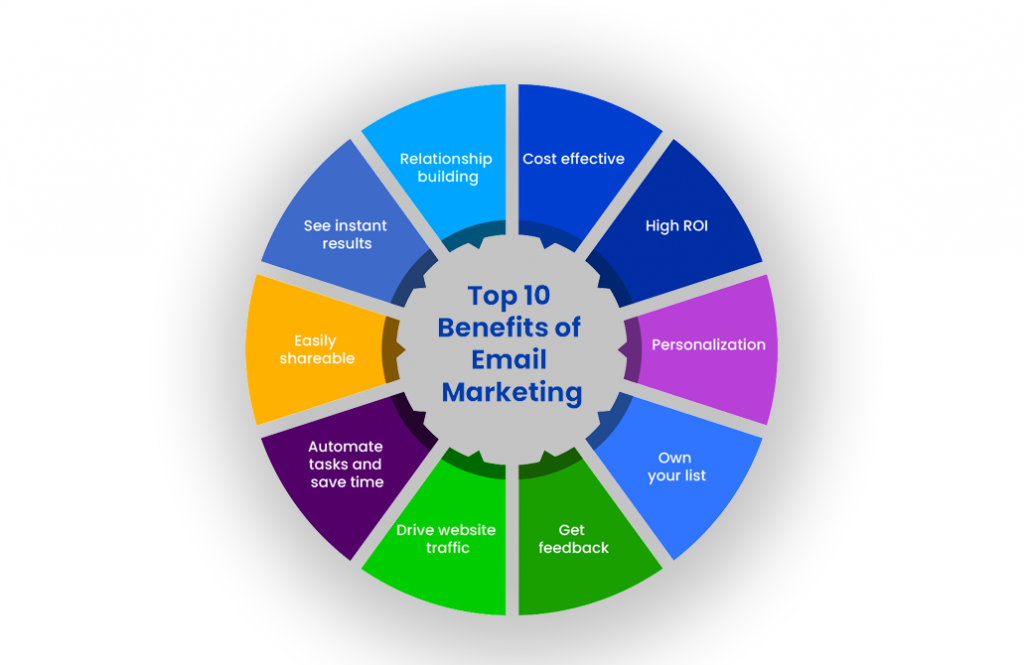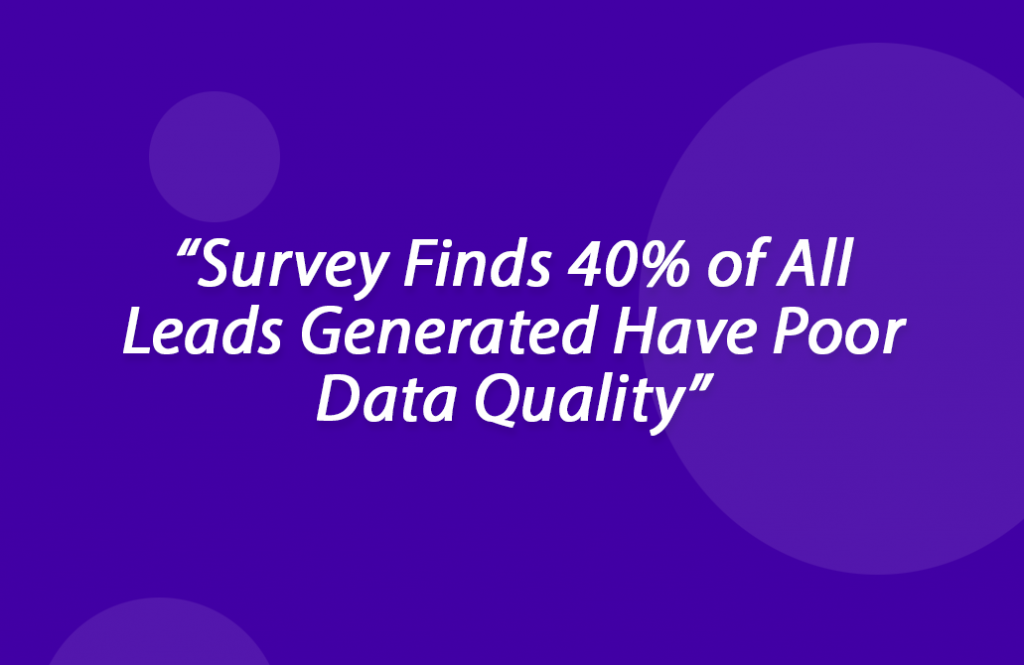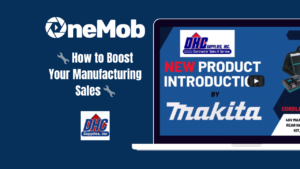Companies that focus on constantly improving email marketing, especially in the B2B world, tend to be more aware of what attracts their ideal customers.
If you own a company that sells products or services, marketing campaigns are probably a familiar concept. After all, marketing is the backbone of sales. Turning potential leads into repeat customers is the best way to increase sales and maintain a competitive edge in the market.
There are many avenues a company can take when formulating a marketing strategy. And as the digital world expands, those options only grow. Many companies are turning to social media as the newest and potentially best way to get their brand in front of consumers.
But is it?
Research says otherwise.
Email marketing has been around for nearly half a century. That’s a long time for one marketing strategy to remain at the top of the pyramid. When it comes to being beneficial for companies in terms of generating leads, creating conversions, and increasing sales, the numbers don’t lie. Email marketing remains the most effective strategy to market a brand.
What is Email Marketing?
Email marketing refers to using personalized emails sent to an already existing list of interested potential consumers to share information about a brand and its products and services.
The potential increase in ROI for companies that utilize a well-crafted email marketing campaign is $42 for every dollar spent. That’s an increase from just four years ago when it was $38 for every dollar.
Despite the rise of alternative marketing platforms, email remains king, and is becoming a more powerful tool than it ever was.
Can B2B Businesses Benefit from Email Marketing?
Most of the focus on email marketing campaigns centers on B2C businesses, meaning companies that sell their products directly to individual consumers. But B2B businesses, or those that sell directly to other companies instead of singular consumers, can benefit just as much if not more from utilizing effective email marketing strategies.
There’s a lot of overlap when it comes to B2B and B2C companies, with many brands that cater to both. And the methods involved in creating and implementing a successful marketing campaign through email overlap as well. But there are unique strategies that B2B businesses can use to get the best results.
In this article, we will seek to explain the different strategies B2B businesses should use when creating an email marketing campaign, how to improve email marketing results, and the amazing benefits that companies can reap in the process.
Exploring the Best Strategies for Email Marketing Improvement
There’s a wealth of information out there already about what makes an email marketing campaign successful. But for B2B companies that truly wish to gain the most benefit, strategies need to go farther than just the basics.
Companies that use email marketing can easily maximize their exposure to potential consumers on a global scale.
And through the use of an effective email marketing campaign, brands can quickly direct already interested subscribers to the exact spot where they need to be to make the leap from interested consumer to customer.
Because the individual consumer thinks and reacts differently than business consumers, companies must use different strategies to hook them. Let’s look at some unique methods B2B businesses can use to maximize the potential of an email marketing campaign.
Focus on Content That Matters to Businesses
When companies use marketing to reach individual consumers, they rely on content that stirs emotions to convert leads into sales. And that strategy makes sense in context because impulse buying is a real thing. But for companies focused on improving email marketing for B2B transactions, the content needs to be focused on logical reasoning.
Why is that? Because buyers for businesses are shopping for products with the business in mind. They’re looking to lower costs and maximize profit. That’s the nature of business. So, sending emails with inspiring stories and funny memes will not create the kind of conversions B2B companies are looking for.
Content in the B2B marketing realm needs to demonstrate value that solves a problem. Statistics, facts, and data will go much farther when marketing to a company. Because it gives buyers something they can take back to the company as proof that the decision to buy a product makes sense.
Focus on Content, Not Promotion
While product promotion has its proper place in every marketing campaign, it shouldn’t be the basis of every email sent. Providing content that demonstrates the science behind a decision to purchase will help increase conversion rates.
New product announcements are a valuable tool in marketing, of course. But the point of email marketing campaigns is to usher buyers down the sales funnel.
That means you don’t need to get every singer subscriber to click the link that says, “Buy Now.” Instead, directing them to your brand’s official website allows them to research independently and make an educated choice about your company and its products.
Build the Right Contacts
An email marketing campaign is only as good as the subscriber list. Companies that do B2C marketing have a much easier time building valuable lists because individuals tend to follow many brands and every follower is a potential customer.
For B2B companies, however, the contact list needs to focus on businesses who stand to benefit from your product. A company is much less likely to follow a brand out of emotional interest. But if the brand sells something of value that can benefit their business, then subscribing to an email list or newsletter makes sense.
B2B companies should focus on lead generation strategies that build a valuable list of subscribers.
- Add an opt-in to a business blog.
- Use lead magnets such as free offers and gated content to persuade potential customers to offer their email addresses in exchange for something.
- Use retargeting popups to turn casual website traffic into subscribers.
- Host webinars to demonstrate your expertise. This will help convert casual interest into loyal followers.
- Use social media to recruit leads and grow a subscriber list.
Designing a B2B Campaign that Fits Perfectly
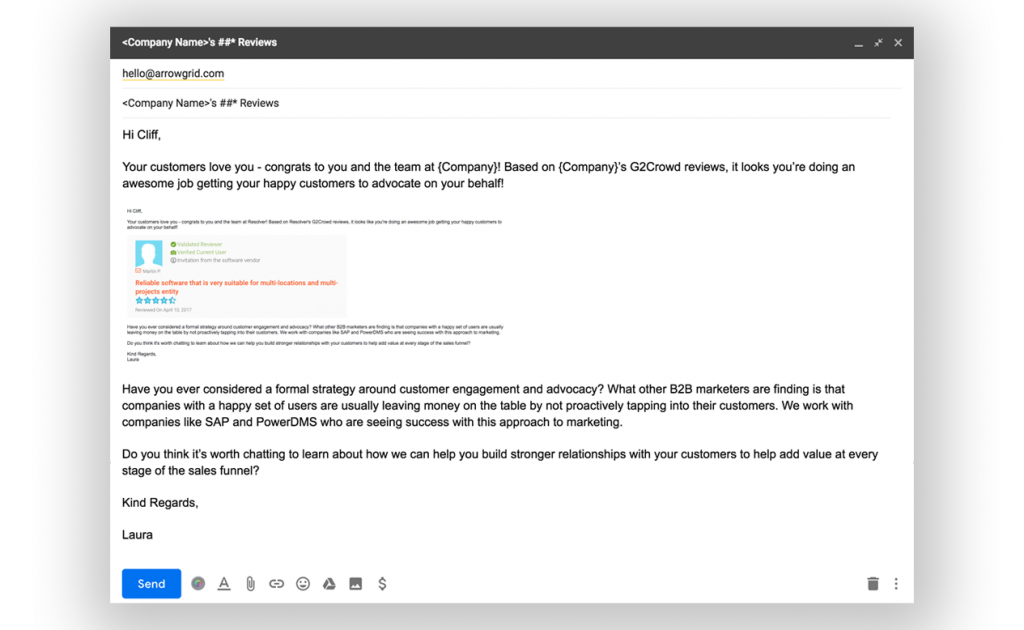
Knowing how to improve email marketing and build an effective email marketing strategy is tricky. Fortunately, with the use of automated software, implementing it can be done with the push of a button.
But before the emails start going out companies need to make sure they’ve created a campaign that will do what it was designed to do. And that means using proven strategies and avoiding common pitfalls.
Email marketing can be one of the most powerful tools at a company’s disposal for many reasons. It’s fast, efficient, cost-effective, and gets proven results. But all those benefits only come when this strategy is used correctly.
Here are some tips on things to avoid when creating a B2B email marketing campaign:
Avoid Repetitive, Boring Emails
Keep content interesting and varied to ensure subscribers don’t get inundated with repetitive, promotional emails. Email readers are accustomed to businesses claiming that their product is the best. Showing businesses the value of your product in relation to their needs will go much farther than blasting email after email that carries the same message.
Don’t Be a Spammer
The biggest hurdle for many email marketing campaigns is spam filters. If your emails get automatically banished to the spam folder, the conversions you’re looking for will never come and chances are that the email you spent time designing will never be opened or read.
Using Cliches, Slang, and Memes
Remember that email campaigns that cater to businesses should almost always be written with a professional tone. The occasional use of humor can be acceptable when used correctly and sparingly, but using a formal, educated style will appeal more to the kind of business consumers B2B companies should be targeting.
Bad Subject Lines
The subject line can be the difference between a reader clicking open or hitting delete. Subject lines need to be clear, concise, and give the reader a reason to open the email. 47% of email recipients decide whether or not to open an email based solely on the subject line. Not to mention that a poorly written or misleading subject line is a sure-fire way for your email to get flagged as spam.
Copy and Paste Content
It’s understood that most companies use a variety of marketing methods to generate leads and grow their sales. And diversification is beneficial in many aspects. But it might be tempting for companies to copy and paste content between platforms. Content created for Instagram, Twitter, or Facebook will vary greatly from content that will be the most effective through email.
Not Mobile Friendly
The percentage of people who read their email on a mobile device is growing exponentially. When companies create an email marketing campaign but fail to optimize their design for easy reading on mobile devices, they lose out. 80% of email recipients will delete an email that isn’t mobile-friendly.
Size and Design Flaws
A well-crafted email can be targeted and beautiful in design without taking ten minutes to load. When emails include too much information, readers are much more likely to click away. Knowing how to improve email marketing is a matter of creating useful content that is easy to access.
Bad Branding
A good B2B email campaign is targeting other businesses. And businesses know about branding. So, if you send emails that fail to include consistent branding, they’re likely to notice. Designing emails with professional logos, slogans, and even color schemes give your company the professional edge it will need to compete in the business-to-business realm.
Why Should B2B Businesses Focus on Email Marketing?
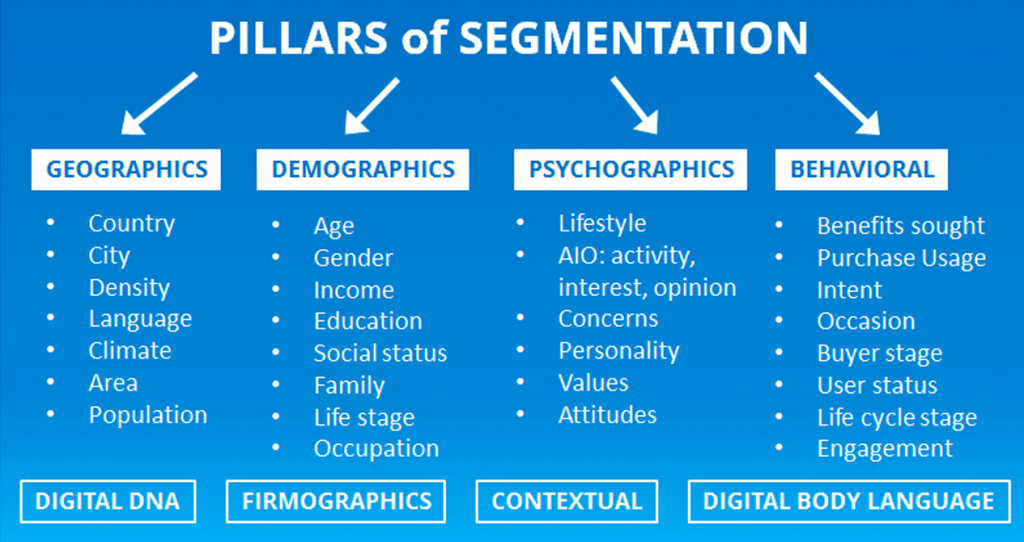
For B2B businesses, learning how to improve email marketing has benefits that shouldn’t be overlooked. The biggest benefit for businesses of all kinds is the incredibly high, unchallenged return on investment. Increased lead generation, higher sales and revenue, and extremely low cost all cumulate into the most cost-effective marketing strategy companies can use to grow their brand.
But aside from the general accolades of email marketing, B2B companies stand to benefit from creating effective campaigns with this proven strategy.
Email is the Perfect Platform for B2B Businesses
Because B2B businesses are based on logic instead of emotion, companies need the best possible platform to get their products and brand information in front of the right audience. For B2B businesses that are focusing on how to improve email marketing campaigns, there is no better way than to target email content the right way.
B2B buyers have unique needs and will be doing much more in-depth research on a product before buying. Whereas B2C companies can rely on individuals making impulse purchases for numerous reasons, B2B buyers need a reason. They will be comparing your products and services to competitors and making an educated decision based on cost, performance, and ROI.
B2B Buying Cycles are longer
When a company sells to individual consumers, the buying cycle is significantly shorter. The lead converts into a customer, a sale is made, and the cycle resets. But for B2B businesses, the amount of time between a lead conversion and a sale can be much longer, even between six to nine months before a purchase is made.
This means that B2B companies need to do everything in their power to nurture those valuable leads. And with email marketing, it becomes easier to keep your brand front and center of a buyer’s mind. An effective email marketing campaign can even help B2B businesses shorten the length of the sales cycle.
Email Marketing Makes Segmentation Easier
When companies use social media or traditional marketing methods, it usually involves the equivalent of shouting from a mountaintop and hoping the right people hear your message. But with email marketing strategies, companies can create segmented lists and target the right message to the group of people most likely to need it.
Segmenting an email list has a significant effect on the overall success of a campaign, especially for B2B businesses. And that’s because it allows companies to reach buyers who are most likely to act upon a specific CTA.
Easier Lead Generation
Email is one of the most effective tools companies can use to generate high-quality leads. Casting a wide net might garner results for a company that focuses on B2C transactions, but for business-to-business companies, it can be more difficult to cultivate leads that will convert to sales.
By using subscriber lists to target content, companies can easily build relationships with potential customers. And having repeated access to readers’ inboxes provides an invaluable way to nurture those leads, giving companies a higher chance of converting them into sales.
Effectiveness of Using Email Marketing in Sales
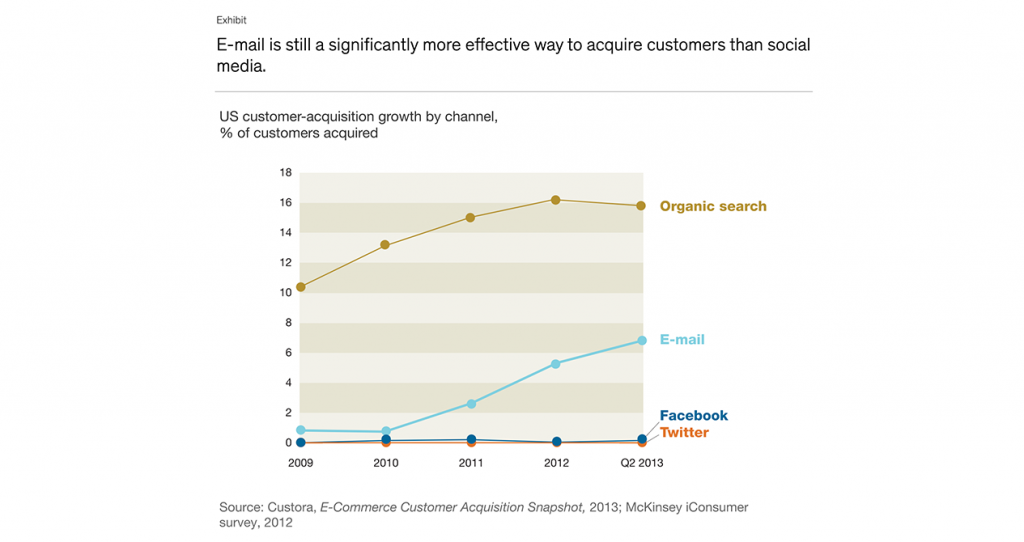
If you’re looking for more proof that email marketing is the most effective method for B2B companies to reach potential customers, generate traffic, and increase sales, the data is out there. We’ve compiled some of the most powerful statistics backed by actual research that clearly shows the effectiveness of email marketing.
If you’re a B2B business trying to figure out how to improve email marketing and need some numbers as proof, we’ve got you covered.
- As a reminder, email marketing generates the highest return on investment of any marketing strategy available today, at a rate of $42 for every dollar invested.
- Studies show that email marketing is 40% more effective than Facebook and Twitter combined. That’s because email campaigns are easily targeted to a list of already interested leads. The chance that social media followers even see a post from a company drops dramatically (as low as 5.2% for Facebook users) unless they pay to boost its visibility.
- It is forecasted that 4.3 billion people will use email in 2022. That figure is expected to reach 4.6 billion by 2025. Consider that the world’s population is estimated to be just under 8 million people and you will understand the reach that email campaigns can have.
- While measurable analytics will differ greatly depending on the strategy and type of email sent, the average open rate for marketing emails is between 15-25%, and the average click-through rate is 2.5%. Facebook boasts a click-through rate of only .07%.
- Approximately 24% of emails are opened within the first 60 minutes of being sent. That number jumps to 50% within the first six hours after delivery. Compare that rate to the amount of time it takes for potential buyers to stumble across a social media post or advertisement.
- As far as consumers themselves are concerned, 91% of adults in the United States say they enjoy receiving emails from companies. And while complaining about the number of emails in your inbox might seem trendy, 49% of consumers polled say they enjoy receiving promotional emails from a company at least once a week.
- 58% of people check their email first thing in the morning, compared to the less than 15% who check social media.
- Statistics show that consumers are more likely to make a purchase from a promotional email than they are based on a social media advertisement. 60% of consumers say they’ve made a purchase due to email marketing compared to 12.5% converted from social media.
What are the Benefits of Using Email Marketing in B2B Businesses?
When B2B companies research ways to improve email marketing, it’s important to highlight the reasons it’s such an effective strategy. And to consider why has it remained the top-performing choice for companies in all segments for creating the most valuable marketing content despite the growth of alternative platforms.
Email Marketing Works
The basis of why email marketing is so beneficial is simply because it works. Proven conversion rates that outperform other marketing methods are something that companies cannot ignore.
If you need evidence that email marketing is the most effective tool for turning leads into customers, just look at the percentage of businesses that use it. 87% of marketers use email as a way to share content. And over 80% of small and mid-sized businesses use email as the primary source of customer acquisition and retention.
68% percent of B2B buyers lose interest because they feel indifference or apathy from a company. And nurtured leads tend to spend 47% more on purchases than non-nurtured leads. These two facts show the effectiveness an email campaign can have when proving to potential customers that they matter to your brand.
Email Marketing is Cost-Effective
Based on the unrivaled return on investment generated from email marketing, it remains the most cost-effective method for companies to share brand content. No other marketing strategy boasts an ROI anywhere near as high.
For companies with a smaller marketing budget, email marketing is a powerful tool that can be used for only a small investment. And larger organizations will benefit from a return on investment that outpaces every other marketing avenue.
Emails Can Be Personalized
The ability to personalize emails sent to consumers is one of the biggest benefits companies have when using email marketing. It’s nearly impossible to get the same level of personalization options with any other marketing strategy out there.
If you need data to back it up, emails with personalized subject lines have an open rate 26% higher than those with generalized subject lines. And personalized email marketing campaigns generate an even higher ROI, with a 122% return on investment.
Results Are Easily Measurable
One of the greatest benefits companies gain when using email marketing is being able to easily measure the results after a campaign. Using automated software programs allows companies to easily see metrics generated by every action taken from the moment that email hits the customer’s inbox.
And companies can use A/B model testing as an effective way to fine-tune their email design and make better-informed decisions about what works well and what doesn’t. No other marketing platform allows the same kind of insight into consumer actions.
Tips that Could Make you Successful in Your B2B Businesses
For B2B businesses to maximize the benefits of an email marketing strategy, everything needs to be done the right way and at the right time. There are many proven tricks to increase the effectiveness of email marketing.
Thankfully, we’ve compiled the top strategies to use that are guaranteed to answer the question of how to improve email marketing campaigns for B2B businesses.
1. Focus on Subscriber Lists
Generating leads is the first step in any successful sales funnel, and email marketing is no different. Studies show that 25% of B2B databases are outdated and 60% of businesses have data about their subscribers that is the same.
Emails that don’t reach the right target are essentially wasted. Making sure that databases and subscriber lists are clean, up to date, and full of the most useful data about demographics and tendencies will increase the chances of engagement.
2. Include a Relevant Call to Action
A good marketing email doesn’t live up to its potential without a clear call to action. Providing useful content that solves a pain point is the first step to getting your foot in the proverbial door, but without a call to action that potential is wasted.
B2B businesses need to make sure the CTA isn’t just a beg for sales, but instead gives them a valuable reason to continue the conversation. Business buyers will do extensive research and market comparisons before buying anything, so a CTA that is inspired by impulse buying won’t work. Instead, offer something that solves their problems and demonstrates its value.
3. Prioritize Quality over Quantity
Too many emails are a turn-off for consumers. Bombarding inboxes with repetitive promotional emails is a sure way to batter a valuable lead into clicking that unsubscribe link. Statistics show that an average of 78% of people who unsubscribed from an email list did so because they felt the number of emails received was too high.
Creating high-quality content that is targeted to solve a problem for consumers is much more beneficial than spamming them with repetitive, salesy emails.
4. Focus on Scheduling
Knowing when to send emails to B2B customers can increase open rates and generate better conversions. And while this decision can vary based on the content of the email and the type of subscriber you intend to reach; the consensus still says that certain days and times will generate a better result.
Based on industry research, the middle of the week offers the best chance of success. Thursday offers the best open rates. Tuesdays receive the highest click-through rate. And Wednesdays are the third-best weekday to send marketing emails.
Even the time of day can make a difference, with early morning generating the highest open rates but the middle of the day and early evening hours getting the best overall results.
5. Offer Something for Nothing
What’s the best way to turn a potential lead into a recurring customer? You’ve got to find something that encourages them to leap. There’s no better way to do this than by offering them something valuable in exchange for their time.
Free trials are an excellent incentive that can give potential buyers a free ticket to experience exactly what you’re offering. But apart from that, there are many valuable offerings that B2B companies can provide as a way to build interest and trust.
Online workshops, demonstrations, and downloadable content that is relevant and targeted to specific buyers can convert a lead into a customer. And by offering subscribers the option of sharing personal specifics with you for entry, like a questionnaire, you can gather valuable insights into their habits and needs, which will help with list segmentation in the future.
6. Segment and Target Content
One of the biggest benefits of email marketing is the ability to target content to the people who are most likely to appreciate it. And with segmentation, email campaigns have 49% higher click-through rates and 23% higher open rates than general blast emails.
Marketing professionals report that segmented email marketing campaigns increased revenue generation by 760%. The value of being able to target promotional messages and brand information to the right audience cannot be undersold.
7. Nurture Leads Through the Sales Funnel
B2B buyers have a full plate and lots of options when it comes to products and purchasing. And their goal is to make the decision that best benefits the company in the long term. But because the business-to-business sales cycle is longer than B2C conversions, it’s more important for companies to nurture every potential sale all the way through.
Studies show that 77% of B2B customers regard their recent buying experience as being too complicated and too lengthy. That means following up systematically to keep buyers engaged helps usher them to a final decision to make a purchase.
8. Use an ESP to Automate It
An effective and successful email marketing campaign must include the use of an email service provider, which is software that is designed to help companies manage subscriber lists, design quality email content, and then send emails automatically based on custom inputs.
The benefits of using an automated system to manage an email campaign are easy to understand. Virtually every other tip on this list can be quickly and efficiently managed through the use of automated software programs.
Even more important is the ability for companies to send triggered emails based on consumers’ actions. Welcome emails, thanks for purchasing emails, and re-engagement messages are all examples of targeted messaging that can be automatically sent when a customer makes a certain action.
Final Thoughts On How To Improve Email Marketing
Marketing is a necessity for companies of all kinds but can be especially challenging for B2B businesses. Some unique struggles and strategies need to be employed when dealing with customers who are in business themselves.
For companies looking for the most cost-effective and efficient marketing strategy, email is still the way to go. Email marketing provides access to a global audience and allows companies to get their brand in front of those consumers who are most likely to become customers.
When B2B businesses need to know how to improve email marketing strategies, they need to think about the potential customer. When companies take the time and make an effort to optimize their emails toward the needs of the customer, they will reap the biggest benefits.
Using technology and software to automate the creation and management of email campaigns can make the process faster, easier, and virtually pain-free. For companies that want to succeed in the B2B sphere, email marketing isn’t just beneficial. It’s practically a requirement.

